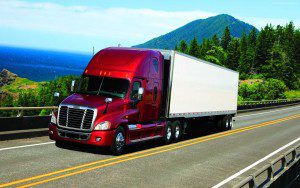As the debate for allowing heavier freight loads on interstate roads continues, it’s important to consider the arguments for, and against, heavier freight based on the perspectives of those affected. When it comes to intermodal container freight transport, could heavier loads be beneficial to most of the current stakeholders?

Over 40 states permit trucks to carry heavy loads on state roads. The pending Safe and Efficient Transportation Act of 2013 (SETA), H.R. 612, gives each state the option to set interstate weight limits of up to 97,000 pounds. We’ve discussed the arguments for and against this measure in an earlier blog post. The main arguments were:
- The potential for heavy loads to result in adverse impacts to roads, interstate highways, and other infrastructure,
- Insufficient financial compensation to the American people from transporters of heavier loads to cover the additional repair and maintenance costs of these impacts, and
- The proposal to move from five to six axle chassis for better weight distribution in order to balance loads and mitigate the damage to roadways and infrastructure.
Rail advocacy organizations, like the Association of American Railroads, oppose increasing the weight limit. They argue that large trucks do not pay their fair share of roadway damage mitigation costs. Moreover, they emphasize that rail transportation is cleaner, safer, more cost effective, and that they annually invest heavily in infrastructure and technology.
Truckers and shipping advocates, like the Coalition for Transportation Productivity, cite greater space efficiency per cargo load, which would result in the need for fewer trucks and truck drivers. Thus, it also has implications for improving highway safety by reducing vehicle miles traveled.
Intermodal freight interests argue for heavier containerized freight transport limits, and for cooperation among rail transportation and drayage truckers to improve efficiency. Rail lines are updated to accommodate heavier containerized freight hauling, improve safety and minimize fuel costs and environmental impacts.
On-road transporters that specialize in drayage and/or longer runs for delivery of containerized cargo have an increasingly wider variety of chassis options available to them to safely and efficiently accommodate heavier loads, and technological advances are helping to minimize adverse impacts such as damage to roadways.
The routine consumer, outside of the freight transport industry, tends to view trucks and rail as a single transportation system. In reality, the type and weight of the cargo in conjunction with the distance between source and destination are all determining factors in how a freight load is transported most efficiently and economically. The number of options available to intermodal freight transporters is increasingly varied and complex. Increasing the weight allowances of freight loads is one potential solution that has benefits to the intermodal freight carriers including more timely deliveries that are presumably safer in terms of vehicle miles traveled, but the benefits to other stakeholders such as rail lines and the general public who ultimately must bear the cost of roadway repairs is still up for debate.

